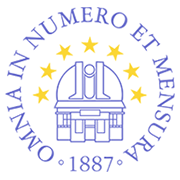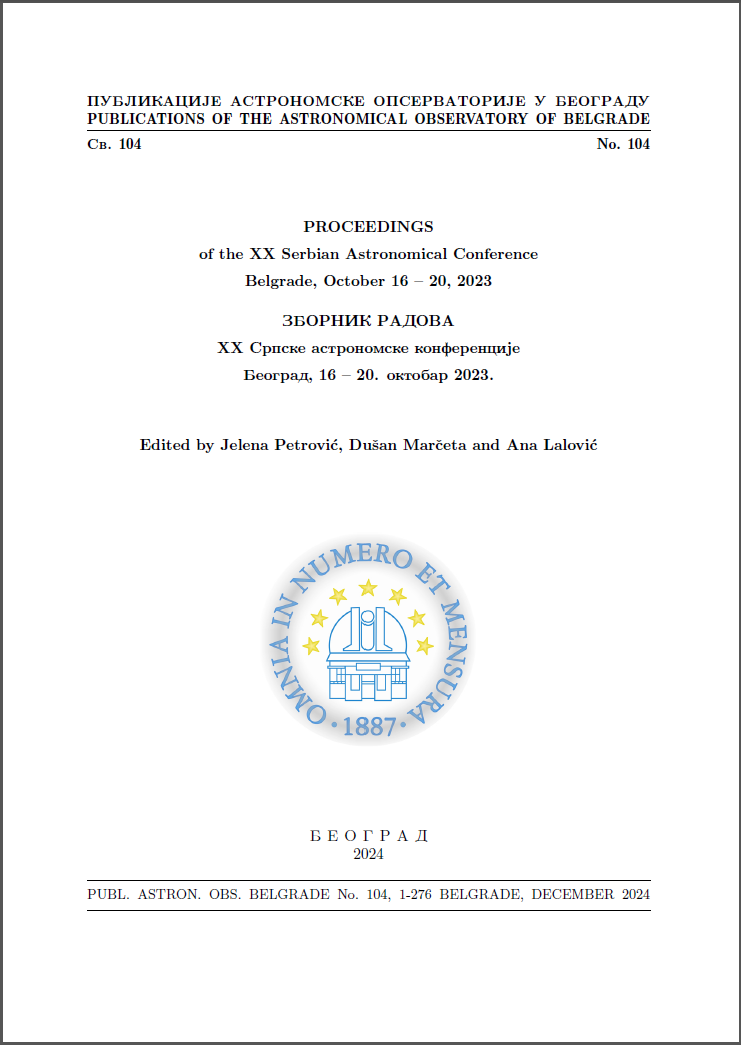MUSE-NFM OBSERVATIONS OF THE CIRCINUS ACTIVE GALACTIC NUCLEUS
Sladjana Knežević, Darshan Kakkad, Marko Stalevski, Makoto Kishimoto, Daniel Asmus, Frédéric P. A. Vogt.
Publication
PUBLICATIONS OF THE ASTRONOMICAL OBSERVATORY OF BELGRADE104, Page 169-174, https://doi.org/10.69646/aob104p169
PROCEEDINGS of the XX Serbian Astronomical Conference, Belgrade, October 16 - 20, 2023, Edited by Jelena Petrović, Dušan Marčeta and Ana Lalović
Published by: Astronomical Observatory, Volgina 7, 11060 Belgrade 38, Serbia
Published: 15. 12. 2024.
Abstract
Abstract. We present integral-field spectroscopic observations of the Circinus galaxy performed with the MUSE narrow field mode on the VLT. The spatial resolution of ∼ 0.1" within the field-of-view of 7.5" × 7.5" enabled us to zoom into the ionized gas kinematics within the central ∼ 100 pc of the AGN. The analysis revealed that the systemic component resembles the ionization cone structure seen in larger scales, while the outflowing component shows a "tuning-fork" morphology: a collimated structure originating near the AGN location and extending in the north-western direction before it splits into two arms at around 30 pc from the AGN. We speculate that the origin of the collimated outflow might be due to the radio jet and ISM interactions on parsec scales, while a presense of a dust clump at the tip of the collimated part of the outflow might explain its fragmentation. The estimated total instantaneous and time-average mass outflow rates suggests that the observed outflow is not expected to regulate star formation within the ∼ 100 pc. BPT diagram revealed that the dominant source of ionization is the AGN. In addition, we will present also the morphology and kinematics of the coronal gas traced by the high-ionization forbidden lines.




